We deliver news, articles and updates on Mongolia every day in English and Mongolian.
Just visit your English version to read the current news. Infomongol.mn also provides monthly, quarterly and annual reports on Mongolia for your areas of interest. We would be very delighted to serve you and be your long term news source.
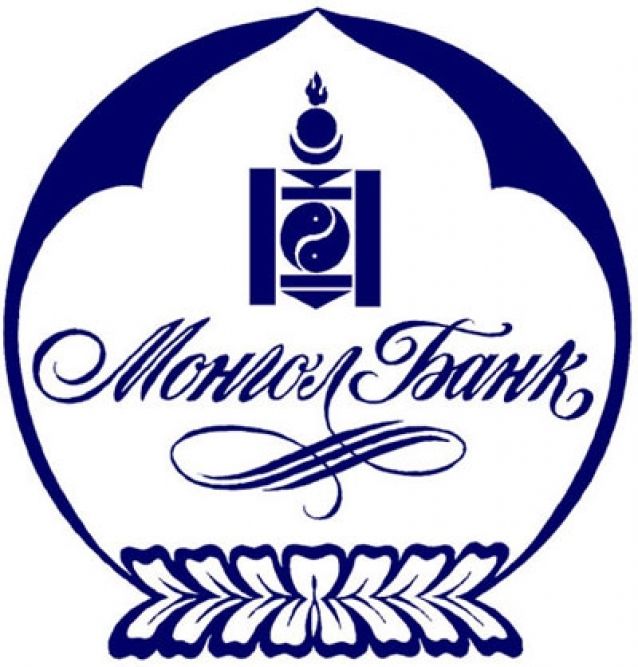 A number of documents provide evidences that since the Hun, Tureg, and Uigur empires, the Mongols have utilized coinage in trade. Upon establishing the unified Mongol Empire, Chinggis Khan introduced gold and silver coins called Sukhes and later, in the year of 1227, introduced the world's first paper money /banknote/ into circulation.
A number of documents provide evidences that since the Hun, Tureg, and Uigur empires, the Mongols have utilized coinage in trade. Upon establishing the unified Mongol Empire, Chinggis Khan introduced gold and silver coins called Sukhes and later, in the year of 1227, introduced the world's first paper money /banknote/ into circulation.
This proves that Chinggis Khan effectively used the role of trade and money exchanges when holding the nation's political, economic, and cultural systems under strong centralized power.
As early as 1236, Mongols implemented "currency reform" by invalidating coins of various shapes, weights and values and melting them into new coins with equal weights and values. Paper currency and coins were issued in large amounts, and in 1253 the Monetary Division was established and conducted money circulation in manners such that resembles modern financial intermediaries.
Initially, the coins of the period were not labeled with specific numeric values. However, later, in 1241 coins entitled "The Currency of the Great Mongol Empire" were issued with "1" engraved on them.
During the reign of Kublai Khan, the "Deposit Bank" was established in Khar-Khorum, the capital of the Mongol Empire, in the year 1260 and banknotes with values of 10, 20, 100, and 1000 were introduced into circulation. Later, in 1282, other branches of the bank were opened in other commercial centers.
As the monetary system underwent further developments, the reform of existing banknotes was made in 1280. In addition, in the year 1327, the banknote distraction unit, which was responsible for nullification of worn banknotes, was established and it required a necessary presence of province official during the process.
During the reign of the successive Mongol emperors golden, silver and other type of coins and banknotes have been issued into money circulation more than 100 times.
Such high economic, cultural, and scientific achievements of the Mongol people were sadly left in oblivion under the centuries of long oppression of the Qing Dynasty. Only in 1921, following the victory of the People's Revolution, newly independent Mongolia regained the chance to restore its own monetary system. At that time Mongolia lacked an efficient financial system and the currency of Russia and China, gold and silver coins issued in England, in the US, or in Mexico, silver blocks, Chinese or Manchu silver blocks called Yumbuu, yaks, camels, horses, other livestock, tea, and fur were functioning as medium of exchange; thus, inevitably hindering the efficiency of the exchange system and the economy.
Following the Revolution that took place in such conditions, the People's Government systematically carried out numerous important measures directed at reforming and stabilizing the nation's political and economic systems, one of which was the establishment and development of the financial system.
During the beginning period of the revolution, there were several efforts of financial reforms or for example, in March 1921, foundation of the national financial system was laid, and in June 2, 1924, the Mongolian Trade and Industrial Bank (which became The Bank of Mongolia later, in 1954) was established as a Soviet-Mongolian joint venture.
Although the national financial system and bank were established, difficulties still emerged against conducting and implementing monetary and loan policy due to the absence of national currency and numerous foreign monetary units, that were circulating on domestic markets.
One of the most important measures administered by the post-revolution government was creation of national currency. In order to do so, immediate regulation and standardization of money in circulation were required; and as a result, in August 1921, "lan" was introduced as a temporary monetary unit to function as a medium of exchange. One lan was equal to one Chinese silver Yanchaan, 1.42 Russian gold coin, and two lans were equal to one Russian paper currency.
The deposit and loan are directly linked to the national money, and in order to understand the financial system, it is essential to know the nature of money, its role and functions.
The issue of creating own national currency was raised before the government since the first day of the revolution victory.
During the years that followed the Revolution, Mongolia advanced immensely in the political and economic realms. Mongolia's Trade and Industrial Bank grew stronger, expanded its gold reserves, assets, and clientele. The Bank's rising influence on the nation's economy paved the road to further reforms of improving money transactions and introducing the national currency.
In August 1924, Mongolian People Revolutionary Party's (MPRP) Third Meeting discussed the activities of the Bank of Mongolia and stress on the importance of " a release of a currency backed by silver standard into circulation." The Resolution of First Meeting of Mongolian People's Republic stated that the use of foreign currency was harmful to the national economy; thus, it was vital to establish a national currency.
Mongolian People's Government released a historic currency reform act on February 22, 1925. The act stated:
-
1. The Mongolian Trade and Industrial Bank possesses a unitary right to issue currency into circulation
-
2. The notes released from the Trade and Industrial Bank are to be issued in currency units called Togrogs, with numeric values of 1, 2, 5, 10, 25, 50, and 100
-
3. The currency shall be fully backed by other things with implicit values. At minimum, 25% must be backed by precious metal, and 75% by goods with high liquidity.
In this way, it has been 77 years since the first 200100 Togrogs were issued into circulation on December of 1925. Banknotes were introduced into circulation along with 900 probes silver coins weighted 18 grams, which was called "Togrog". It was not appropriate if only silver coins were introduced into circulation because of difficulties related with storing and transportation of this heavy metal.
Togrog was initially released into circulation through payroll, and gradually, all expenses of state enterprises began to be noted in the budget report in Togrogs.
Immediately after its release into circulation, Togrog faced severe protests from foreign currencies. From the foreign currencies circulating on the markets, the currencies with relatively small market share were successfully pulled out of the exchange system within a short period of time.
However, Chinese yanchaan, due to its large quantity and market role, continued to function as a legal medium of exchange and as a standard of value for the state revenue-and-expense reports, banks' and other enterprises' financial statements throughout the early period of Togrog issuance.
Obtaining acceptability for the new paper currency at the time when people were accustomed to using metal money and had lost faith in depreciating paper currencies of Russia and China was to be troublesome. As of 1925, there were over 20 million foreign banknotes were circulating on the hands of Mongolian and foreign consumers and firms.
From the start when Togrog was issued into circulation, a stark competition arouse between Mongolian Togrog and Chinese yanchaan.
Because the monetary reform was considered to be a revolutionary act conducted in the interest of Mongolian people, the new currency eventually received keen support from the people.
Both the Government and the Central Bank vigorously prepared for the issuance of the new currency, and were promoting benefits of the new currency to the public, paying special attention to the process of monetary reform, as the results of other economic reforms were to directly depend on the successes of this venture.
As Togrog competed against yanchaan on the markets, yanchaan's rate depreciated, and Togrog's purchasing power rose. Subsequently, Togrog's reputation, as well as its market weight, increased substantially and the 1:0.88 rate against yanchaan rose to 1:1 by the end of 1926. This showed the successful entrance of the new currency into the nation's exchange system and that it attained complete dominance on the domestic markets.
As the new currency entered circulation, foreign currency equivalent to 6.8 million yanchaan was ousted from the transaction system, which was a big shock for the foreign currency transactions.
Starting from 1927, all of Mongolia's institutions and enterprises were using Togrog as a standard of value in preparing budget reports, financial statements, and tax returns and labeling prices, completely forced Chinese yanchaan out from domestic transactions.
While implementing the monetary reform (1926-1927), the Bank of Mongolia's precious metal reserves rose by 4.2 times.
Because of changes occurred at the international market during the period from 1925 to 1927 such as a fall of silver price on world markets and the demand increase for gold, in order to maintain stability of Togrog, State Baga Khural resolved to put Togrog on gold standard starting from April 15, 1928, basing on the gold and foreign reserves held at the Bank of Mongolia. By doing so, the People's Republic of Mongolia's national currency "Togrog" landed on a firm foundation to become a stable and reliable currency. By August 1, 1928, Togrog was officially put on gold standard and equaled 51.8 US cents.
This, in theory, completed the monetary reform process, with the successful entrance of Togrog as the legal and strong monetary unit.
Due to the reform related systematic measures implemented by the Government in 1924-1928, British, American, and other foreign traders, as well as large firms from China, were driven out of the Mongolia's domestic market.
The successful implementation of the currency reform and the introduction of a national currency had immense political and economic benefits. For instance:
- the Bank of Mongolia had exclusive right to issue currencies into circulation
- unstable and unreliable foreign currencies were completely forced out of the domestic exchange system; thus, preventing foreigners trading with valueless currencies and purchasing goods at unfair prices;
- price level was stabilized throughout the country and the chaotic system of random pricing was dismantled to ensure the centrally-determined prices and further decline in prices;
- provided an opportunity to make advanced central planning of state enterprises' budget
- provided a chance to reform the financial system, gradually regulate all state institutions, and allow them to transfer into self-financed organizations;
- by having the national currency dominate Mongolia's retail and distribution markets, supplied the Government with a powerful weapon to protect the nation's economic independence
Thus, the national currency "Togrog" successfully served all stages of economic activity and industrial development, fully performing all the internationally accepted functions of money: medium of exchange, standard of value, and store of wealth.
In order to expand and mend the Central Bank's currency fund, Togrog was printed and newly issued into circulation in 1939, 1941, 1955, and 1996. The numbers and letter of the paper currency issued at the beginning were printed in old Mongolian script and it was created with the numeric values of 1, 2, 5, 10, 25, 50, and 100. The 25, 50, and 100.
Togrog notes, issued in 1925, carried the signatures of Mikilman, the head of the Central Bank at that time, members Amar, Shigunov, Bat-Ochir, Dugar, and the accountant Bolshakov.Other smaller notes had the signatures of Mikilman, Amar, Shigunov, and Bolshakov.
In 1939, without changing the size, Sukhbaatar's portrait was added to all banknotes and they were printed in old Mongolian script, and 2-Togrog notes were replaced with 3-Togrog notes. In 1941, some numbers and letters of the Togrog were printed in Cyrillic letters with no changes in the size, color, and patterns, and in 1955 the Togrog notes were enlarged and entire print was in Cyrillic letters. To make Togrog more convenient to use, in 1966, the notes were made smaller, maintaining the same rate, but appearing with a wholly different color, picture, and patterns. The latter issue can still be accepted. Upon the release of the 1966 currency into circulation, all previously issued notes were pulled out of circulation within a short period of time through changing them by the new ones. However, the rate remained the same. In 1981 and 1983, the banknotes were printed with the same design and in 1981 new 20 Togrog banknote was added to the circulation.
The notes printed in 1925, 1939, 1941, 1955 did not contain specific security elements designed to protect from counterfeit; only the paper, picture, and patterns were of a unique design befitting a currency note. However, 1996 issue banknote paper has watermark depicting "ulzii" ornament and it was made of 3/5 cotton, 2/5 synthetic, fiber and other materials. Thus, when it is magnified, red, blue and other colored fibers can be seen.
Each new Togrog banknotes of the 1993 series vary by its color and size. 500, 1000, 5000, 10000 Togrog notes have portrait of Chinggis Khaan when 10, 20, 50 and 100 Togrog notes have portrait of Sukhbaatar. In addition, pictures reflecting natural beauty, historical events of Mongolia, State flag, the Emblem "soyombo" and national ornaments are included in the 1993 series notes. New series notes are printed using 100 percent cotton paper, and in order to protect from counterfeiting, they have various security features such as watermark, see-through register, micro lettering, latent images to be seen in ultra and phosphorescent light, intaglio printing, anti-scanner and anti-copying line structures. New 10000-togrog banknote of 2000 year' issue has the latest security "holographic patch" feature. All 1993 series notes have facsimile letter (signature) of Mr.Molomjamts, the former Governor of the Bank of Mongolia. Facsimile letter of Mr.J.Unenbat, the successor of Mr.D.Molomjamts appear on 1000 Togrog banknotes reprinted in 1998. All banknotes issued after 2000 have facsimile letters of the current Governor, Mr.O.Chuluunbat.
The 1925, 1937, 1945 coins were made in the Soviet Union; in 1959, coins were made in China; and since 1970, coins began to be made in Mongolia annually based on the public demand.
The 1925 coins labeled with 10, 15, 20, and 50 and the 1937 coins labeled with 10, 15, and 20 were made of pure silver. In 1959, coins valued at 1, 2, 5 were made of aluminum with a whole in the middle.
Currently, the coins from 1970 and on are used in transactions.
Depository institutions determine the acceptability of banknotes and coins. Worn or aged notes are transferred to the Central Bank, where they are destroyed by special technique under the supervision of a special committee. Since 1970, 1-Togrog coins entered into circulation with eight kinds of illustrations engraved on them such as Marx, Sukhbaatar, national symbol, cosmos, etc. With the occasion of the 50th anniversary of the declaration of independence, limited amount of 1-Togrog white coins were made. For the Central Bank's 50th anniversary 10-Togrog coins were also made in small amount.
Following the example of other countries, the Central Bank of Mongolia has also issued coins equivalent to 20, 50, 100, and 200 Togrogs in 1996. The 200-Togrog coin is engraved with the Government building, the 100-Togrog coin is with the Janraiseg temple, 20 and 50-Togrog coins are with their respective number-values. In 2001, due to the 81st anniversary of the People's Revolution, a 500-Togrog coin engraved with Sukhbaatar's portrayal was released into circulation.
The national currency, created in 1925, has participated firmly and reliably in the economic lives of Mongolian institutions and citizens, and been a vital instrument for the success and growth of the financial system.
For Mongolian version please visit here
Монгол эхийг унших бол энд дарж орно уу




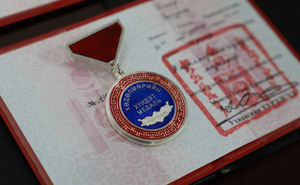
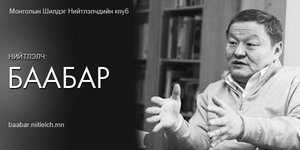



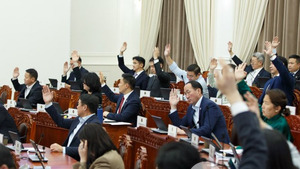
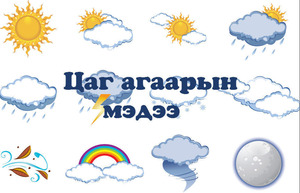








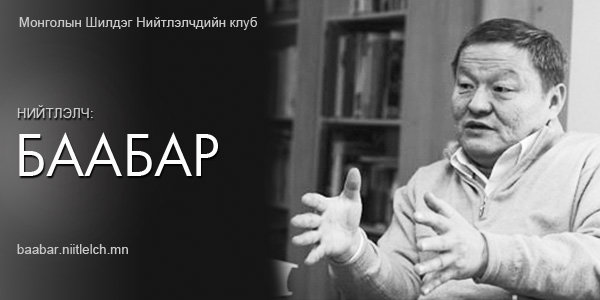

Сэтгэгдэл байхгүй байна